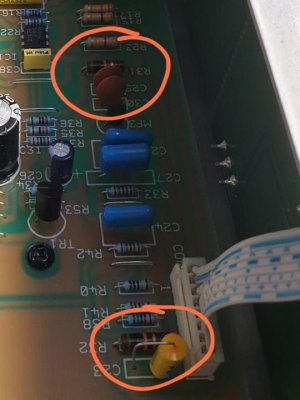Hi there.
I got a AC30CC2. I recently changed all the tubes to JJ and did the Lyle Caldwell mods. But after changing tubes i got some crackling coming out of the amp.. after doing these mods it didn't get worse or better..
I changed all tubes 3 times with new and old ones but that didn't help either.
When i was trying to get the POT pcb out i did have some trouble with getting the switch washers of(they're stuck) so i did those mods from the back of the pcb. Could a switch be damaged?(they all work fine) Or a pot that is dusty?(the top boost volume pot does crackle a little when turning[dust]) But can this also effect the sound when there all untouched ?? :?:
:?:
The crackling noise gets louder when using all volume controls. Also when no guitar cable is plugged in its worse then with one. When playing it's not noticeable.
I cleaned the whole amp already with proffesional contact cleaner
Any ideas ?
See link for audio sample:
https://www.dropbox.com/s/2krxm621po...noise.m4a?dl=0
thanks
I got a AC30CC2. I recently changed all the tubes to JJ and did the Lyle Caldwell mods. But after changing tubes i got some crackling coming out of the amp.. after doing these mods it didn't get worse or better..
I changed all tubes 3 times with new and old ones but that didn't help either.
When i was trying to get the POT pcb out i did have some trouble with getting the switch washers of(they're stuck) so i did those mods from the back of the pcb. Could a switch be damaged?(they all work fine) Or a pot that is dusty?(the top boost volume pot does crackle a little when turning[dust]) But can this also effect the sound when there all untouched ??
The crackling noise gets louder when using all volume controls. Also when no guitar cable is plugged in its worse then with one. When playing it's not noticeable.
I cleaned the whole amp already with proffesional contact cleaner
Any ideas ?
See link for audio sample:
https://www.dropbox.com/s/2krxm621po...noise.m4a?dl=0
thanks
Last edited:

